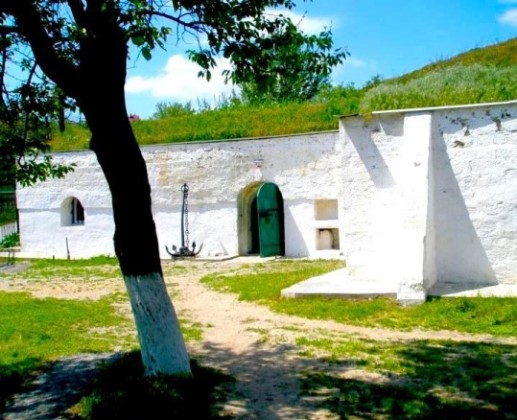

Location: Grushevskaya 8-9 Street (Just off Naberezhnaya Street)
Constructed: 1763
Aksay Fortress with an adjacent customs outpost was constructed in the 18th century to defend newly acquired lands of the Russian Empire from Ottoman Turkish Empire to the South. First stone fortress in Aksay was built in 1763 on a strategic crossing point across river Don. In addition to military service Aksay Fortress served as a customs outpost that controlled trade caravans that passed through these lands. Today Aksay Fortress is turned into part of Aksay Military History Museum that is open to the public. Here you can see a collection of steel and firearms, maps, documents, manuscripts as well as everyday objects that people used. You can also hear various legends of treasures, ghosts and ancient tunnels.
Aksai fortress-museum is located in the area of
the village of Berdanosovka in the city of Aksai. The fortress was
earthen, built according to the canons of wartime with the solidity
and practicality inherent in our ancestors-builders. At first,
according to the fortification plan, open trenches and spaces for
casemates were dug, then they were covered with bricks, thus the
walls of the future fortification were erected. Logs and floor beams
were placed on the walls, which were covered with several layers of
carefully compacted and layer-by-layer dried clay, it was mined
right there, on the bank of the Aksai River. Ventilation ducts were
provided in the ceilings. The thickness of such an earthen covering
reached 10 meters and was a reliable protection against artillery
shelling.
Aksai earthen fortress was built in 1763, almost
simultaneously with the birth of Rostov-on-Don. In the final
version, it looked like a hill measuring 15 by 10 meters and
belonged to the fortress of Dmitry Rostovsky. The defenders of the
fortress had 36 howitzers at their disposal, which surpassed any
ship's cannons in range and in the number of buckshot, that is, in
the strength of defeat. Several of these cannons are on display in
the museum. In underground casemates of impressive size, it was
possible to accommodate a whole cavalry squadron.
On the site
of the fortress in the middle of the 18th century, there was first a
royal, and then a customs outpost and a small settlement of
Ust-Aksaysk. The military-strategic importance of the Aksai fortress
was its geographical position at the crossroads of eight trade
routes, including on the way to the capital of the Don army -
Cherkassk. During the Russian-Turkish wars, the fortress was
entrusted with the task of defending Azov, annexed to Russia by
Peter I.
Today, the exposition of the museum complex presents
edged weapons and firearms, household items and tools of the customs
service, handwritten documents of past years. After going through
several stages of restoration work, the Aksai outpost became part of
the Aksai military history museum. Archaeological research of the
fortress continues.